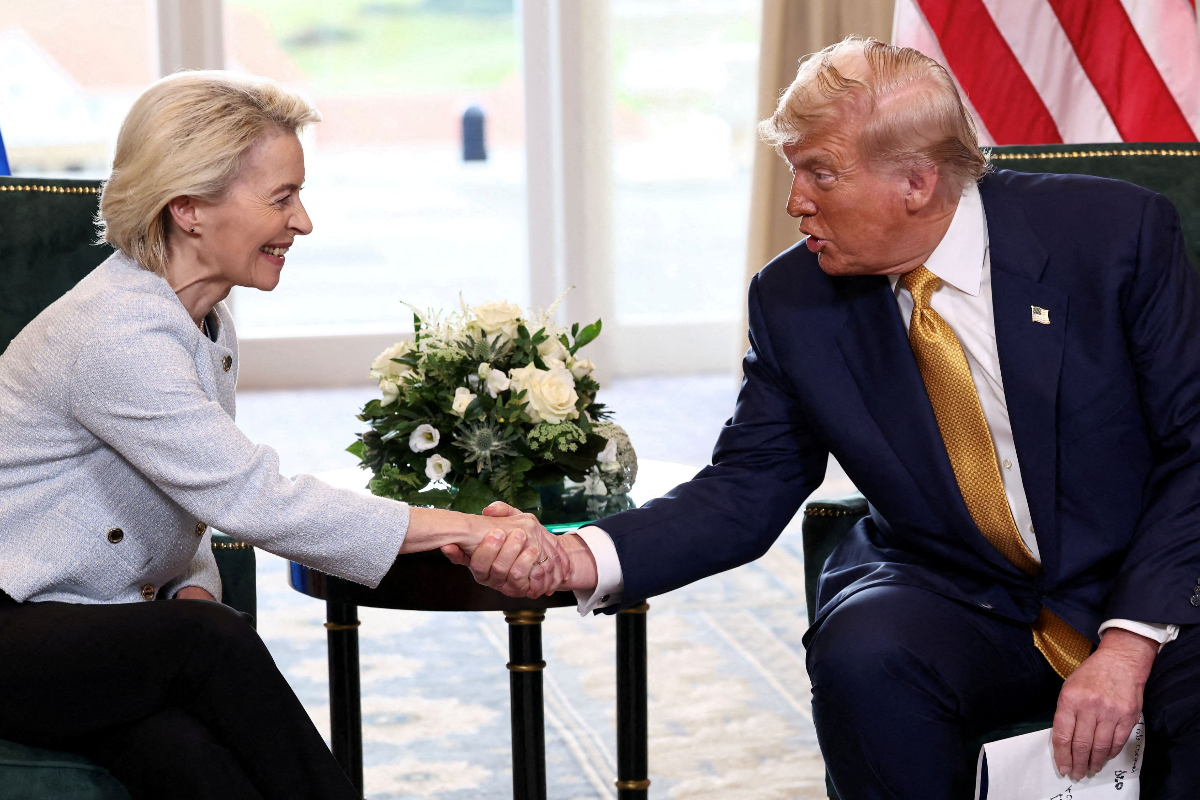The United States and the European Union have agreed to the terms of a framework trade pact that sets a 15% tariff on many EU imports, while opening European markets to a broad range of U.S. industrial and agricultural products.
The deal, announced in a joint statement, builds on negotiations between U.S. President Donald Trump and European Commission President Ursula von der Leyen in Scotland last month. It aims to stabilize transatlantic trade after months of tariff threats and sector-specific investigations.
Tariff Structure
Under the pact, the U.S. will apply a 15% tariff—or the World Trade Organization’s most favored nation (MFN) duty rate, whichever is higher—on EU imports such as cars, auto parts, pharmaceuticals, semiconductors, and lumber. Sectors currently under investigation, which might otherwise have faced tariffs of up to 50%, will be capped at 15%.
Aircraft, generic pharmaceuticals, chemical precursors, and certain natural resources will instead be subject only to the lower WTO MFN rate, effective September 1.
EU Market Concessions
In return, the EU pledged to eliminate tariffs on U.S. industrial products and to extend preferential market access for U.S. farm exports. These include dairy, pork, bison meat, soybean oil, tree nuts, and both fresh and processed fruits and vegetables. The bloc also agreed to revive and expand a 2020 deal on lobster imports.
Both sides committed to coordinating automobile standards and considering further sector-specific cooperation, including on steel and aluminum overcapacity.
Big-Ticket Commitments
The agreement extends beyond tariffs. The EU pledged to procure $750 billion in U.S. energy products by 2028, alongside $40 billion worth of U.S.-made artificial intelligence chips. European companies also plan $600 billion in U.S. investments over the next three years.
The EU will also reduce regulatory barriers for American firms, addressing long-standing U.S. concerns over issues such as sanitary certificates for pork and dairy products, and the bloc’s deforestation regulation.
Economic and Political Stakes
The White House and EU leaders described the pact as a “concrete demonstration” of fair and balanced trade, aimed at reinvigorating industrial growth on both sides of the Atlantic.
“This EU-US trade deal delivers for our citizens & companies, and strengthens transatlantic relations,” von der Leyen said in a post on X.
Analysts estimate that once implemented, the deal will leave the U.S. with an average effective tariff on EU goods between 10% and 14%. Together, the U.S. and EU represent 44% of global GDP, making the pact one of the most significant trade arrangements in the world economy.
Challenges Ahead
The pact is not yet finalized and may face pushback within the EU, particularly over market access for U.S. agricultural products. However, most governments in the bloc are expected to support the agreement due to the benefits it offers to major industries such as cars, pharmaceuticals, and semiconductors.
For now, the framework represents a temporary truce in a long-running dispute over tariffs, offering both sides predictability as they navigate an uncertain global trade environment.



















